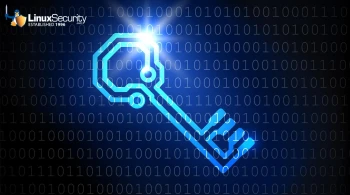Linux admins,
Every Linux admin is familiar with ssh, but do you know which key types to avoid or how to monitor failed logins? SSH keys come in various types, including RSA, DSA, ECDSA, and EdDSA, each with its unique properties and security implications. We haven't used RSA keys for quite a while, and DSA keys are also now considered to be insecure. Linux now supports all the cool features like 2FA, protection against brute force attacks, and hardware tokens. Tools like fail2ban and Icinga are great options for monitoring and alerting against possible security breaches. Stay tuned as we learn more about ssh best practices (and debunk some common myths).
I'll also explain how incorporating automation into third-party risk management enhances accuracy and efficiency, helping businesses make faster, data-driven decisions without compromising compliance.
Please share this newsletter with your friends to help them gain critical Linux security insights. Is there a Linux security-related topic you want to cover for our audience? We welcome contributions from passionate, insightful community members like you!
Yours in Open Source,

Boost Your Linux Server Security with SSH Mastery
Secure remote connections are essential when managing a Linux server, and one of the most widely used and trusted methods for remote server administration is Secure Shell (SSH). SSH creates a protected channel over an insecure network by encrypting all information shared between the server and client, safeguarding data exchanged between them from potential attackers, eavesdroppers, hijackers, or manipulators of communication streams. But why is SSH essential for secure Linux remote server connections, and how can we admins maximize its potential? I'll delve into SSH usage and share best practices for securing SSH. I'll also dispel popular myths regarding security and introduce my top open-source SSH tools, which are available to us all. |
Streamlining Third-Party Risk Management with Automation: What Businesses Need to Know
Managing third-party risks is critical to business operations, especially in today’s interconnected global economy. With organizations relying more than ever on vendors, suppliers, and contractors, identifying and mitigating risks associated with these external parties is essential. Meanwhile, keeping up with the latest advancements in linux security and linux news is crucial for IT departments to protect their systems. Traditionally, third-party risk management (TPRM) processes have been manual, resource-intensive, and error-prone. However, technological advancements have ushered in a new era: TPRM automation. Incorporating automation into third-party risk management enhances accuracy and efficiency, helping businesses make faster, data-driven decisions without compromising compliance. We explore how TPRM automation can revolutionize risk management and why businesses should automate third-party risk processes. |















